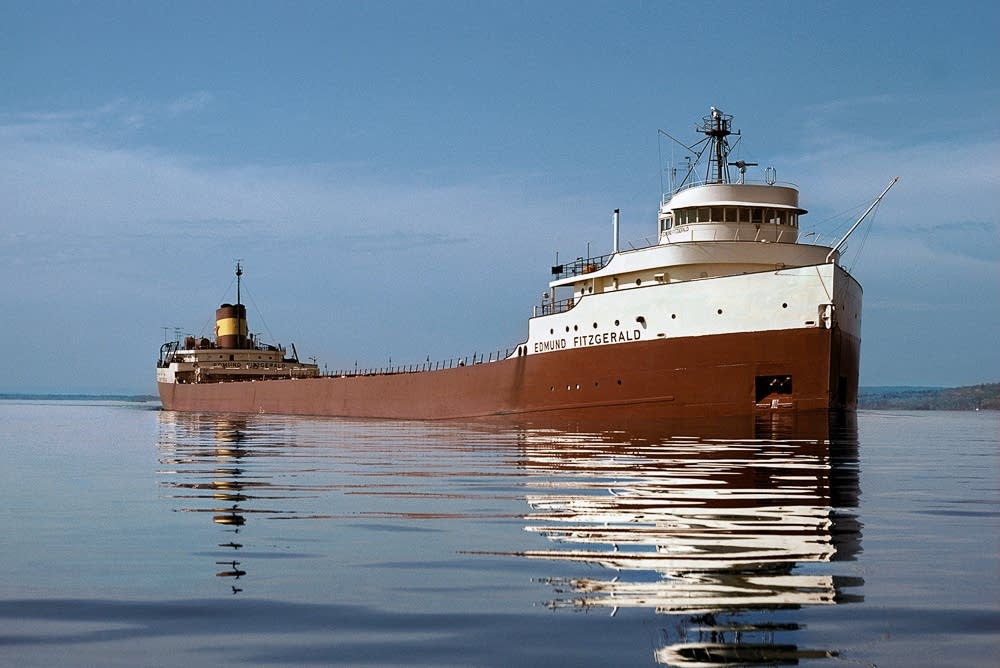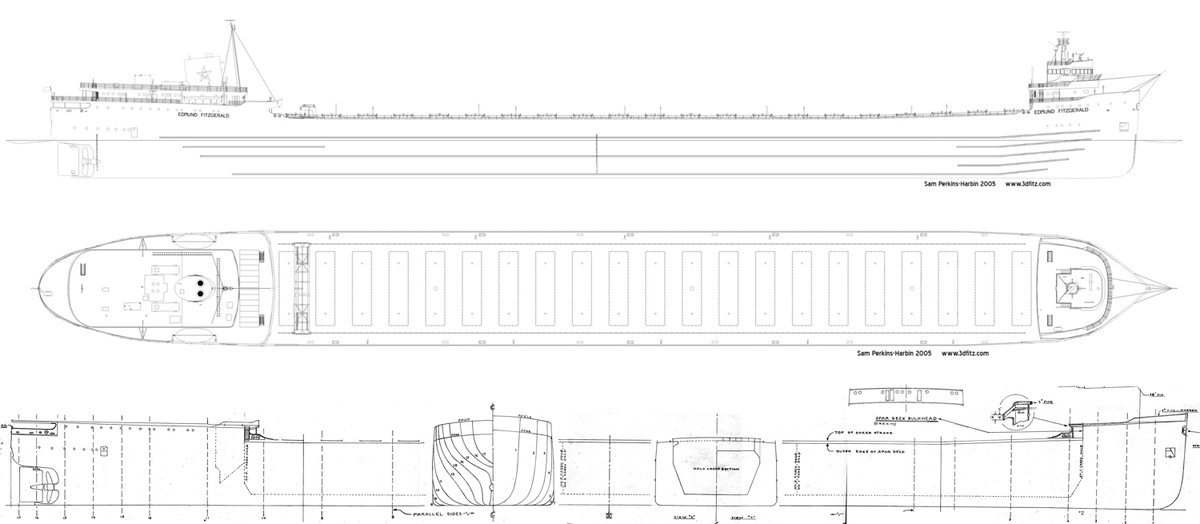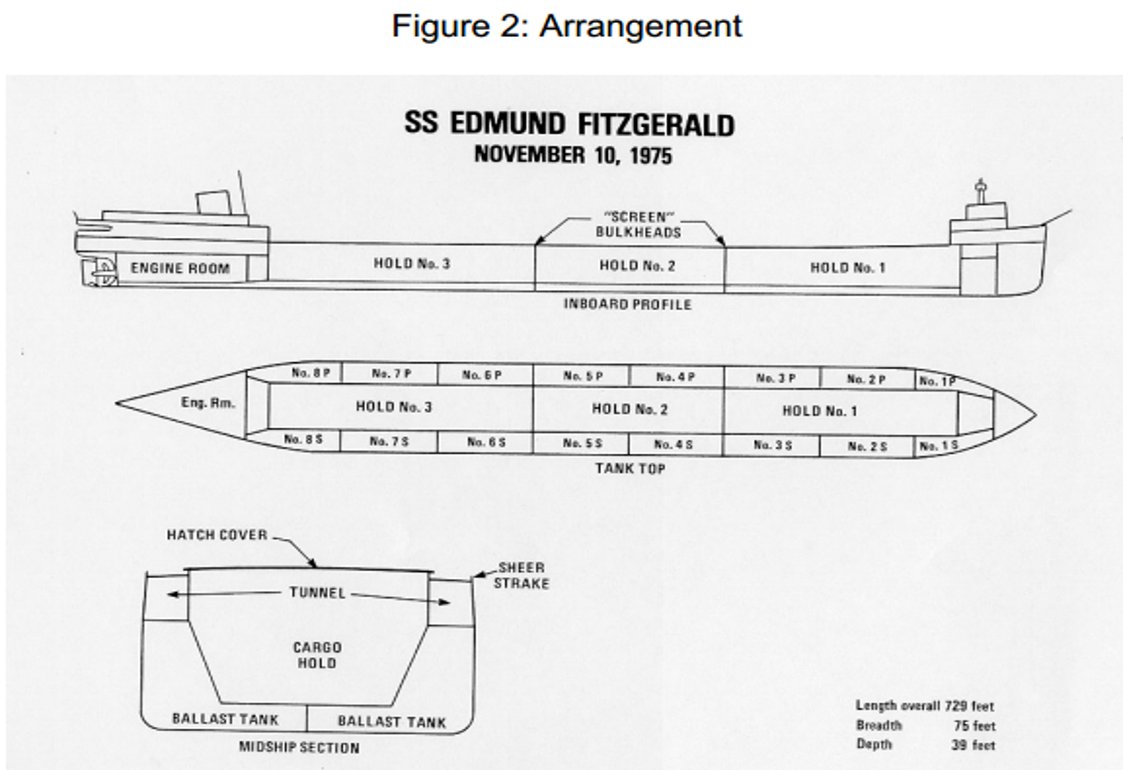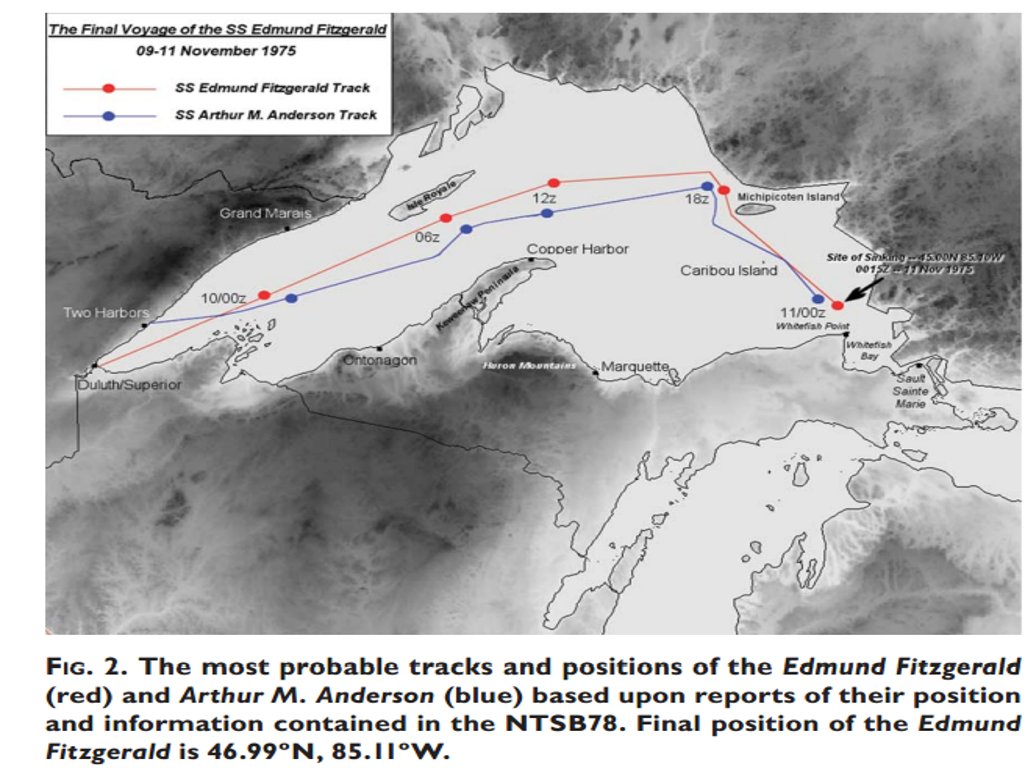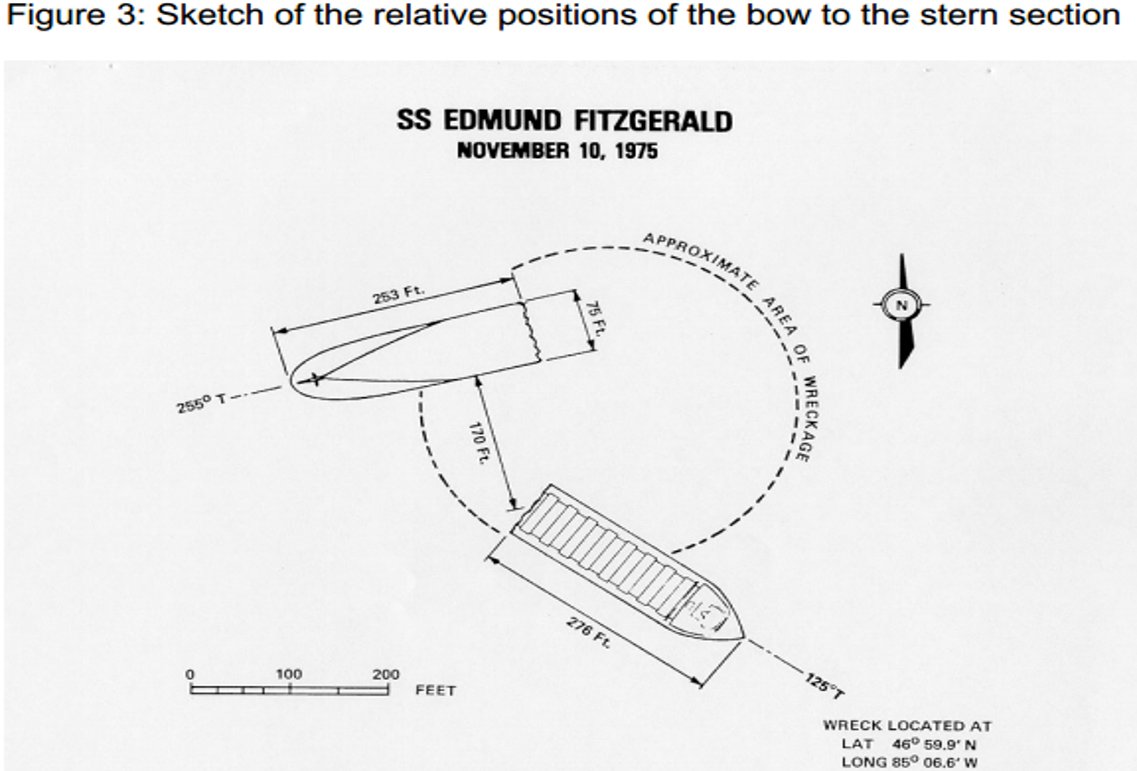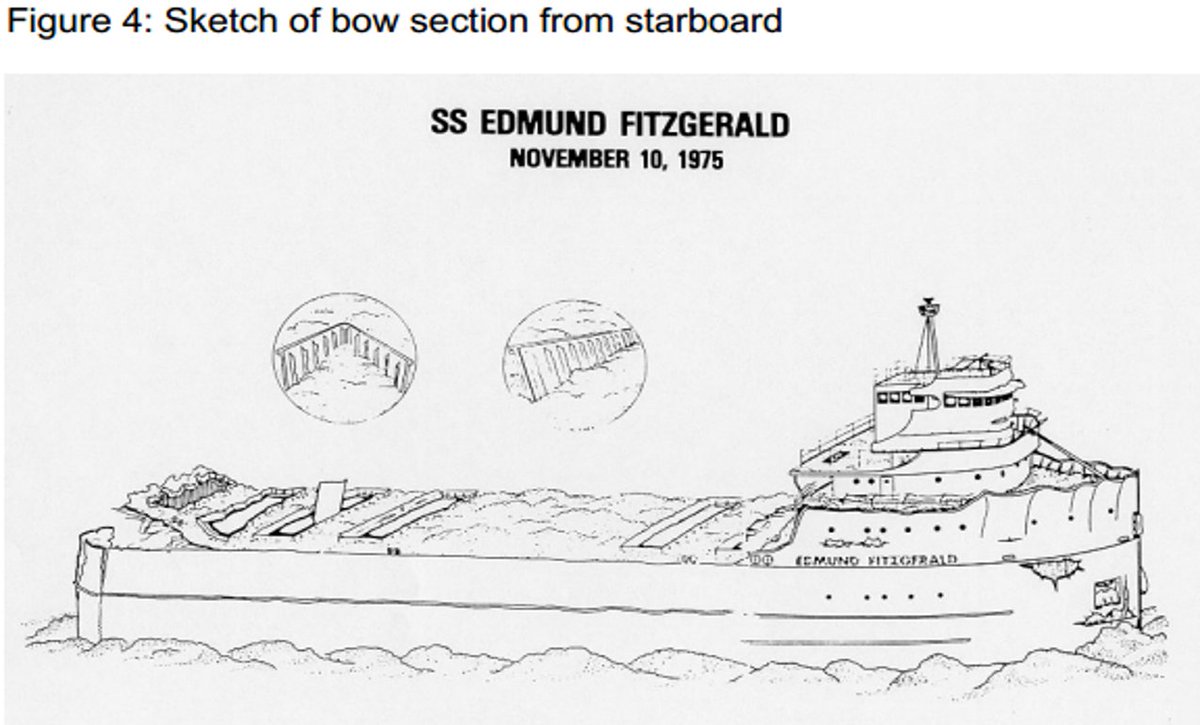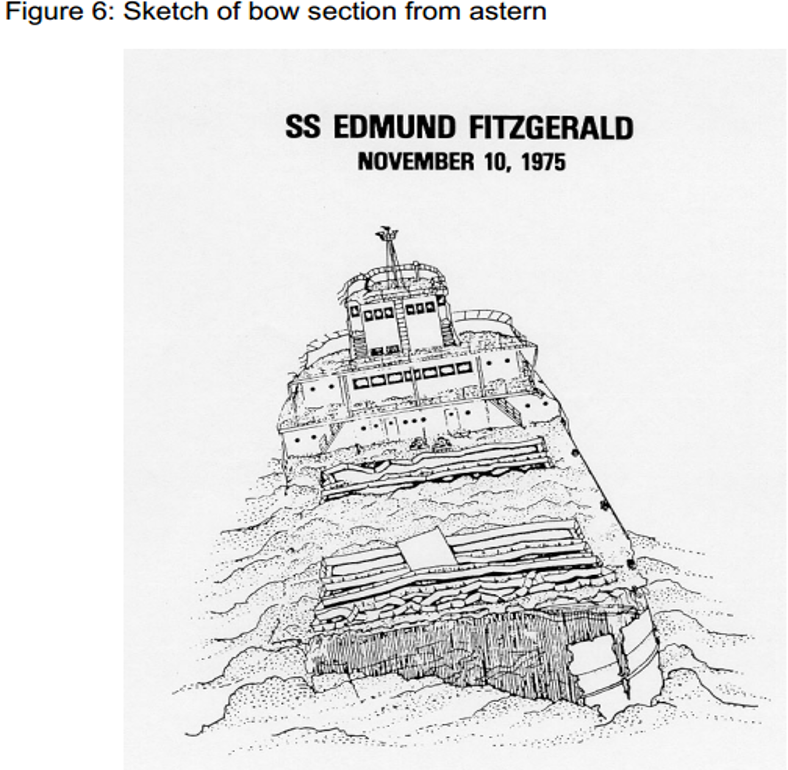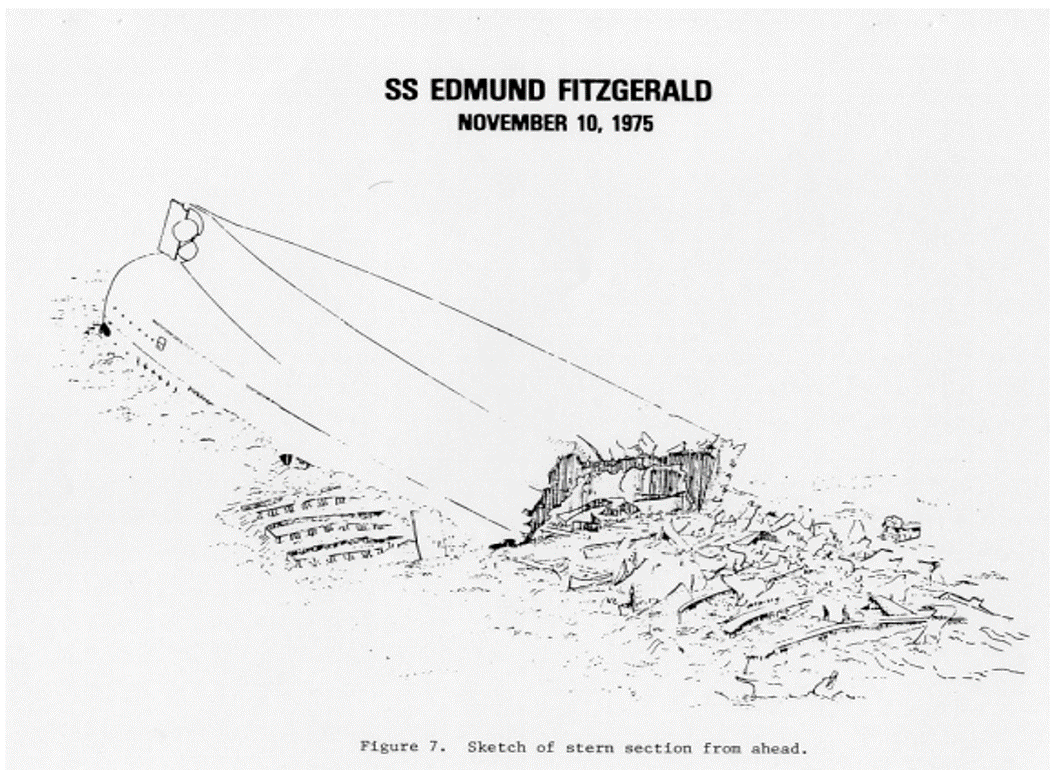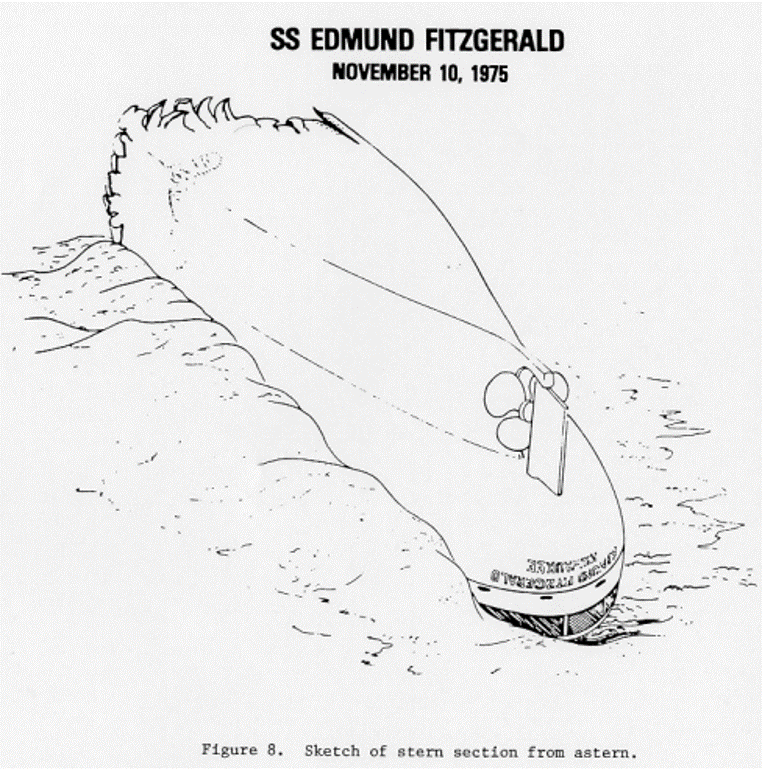#OTD in Weather History, 45 years ago, on November 10, 1975, the ore freighter SS EDMUND FITZGERALD was lost with all hands in a severe storm on Lake Superior.
She is perhaps the best known shipwreck on the Great Lakes, and today we remember her loss. 1/
She is perhaps the best known shipwreck on the Great Lakes, and today we remember her loss. 1/
The Fitz owes her fame to a number of things. She was one of the largest ships on the lake at the time of her loss, and the largest ship to be lost on Superior. Also, because there were no survivors of her loss, the exact cause of her sinking remains a mystery to this day. 2/
But another reason for her fame is the song you all know. Gordon Lightfoot recorded "The Wreck of the Edmund Fitzgerald" the year after her loss in 1976. The song reached Number 2 on Billboard charts in the US. 3/
In this thread we'll talk about the events leading up to the loss of the Edmund Fitzgerald, and then the meteorology behind the storm that sank her.
I'll put my sources at the end. All of them are publicly accessible, so you can read further if you like. 4/
I'll put my sources at the end. All of them are publicly accessible, so you can read further if you like. 4/
The Edmund Fitzgerald was built in 1958. She was 729 ft long with a beam of 75 ft and a draft of 25 ft. She weighed 13,000 tons empty. She was powered by a 7500hp steam turbine with a maximum speed of about 14 knots, and carried a crew of 29. Image from http://www.3dfitz.com 5/
Like many lake ore freighters, the Fitz was essentially a giant box with an engine room attached.
She had a single cargo hold divided into 3 sections by non-watertight screen bulkheads, surrounded by ballast tanks on the port/starboard sides. USCG image 6/
She had a single cargo hold divided into 3 sections by non-watertight screen bulkheads, surrounded by ballast tanks on the port/starboard sides. USCG image 6/
A note about times in this thread: the NTSB and USCG reports are in Eastern Standard Time, while the meteorological reports are in UTC (Zulu) time. EST is UTC -5 hours.
I'll note which I'm using and where. 7/
I'll note which I'm using and where. 7/
At 2:15 PM EST on Nov 9, 1975, the SS EDMUND FITZGERALD departed the Burlington Northern Railroad Dock No. 1 in Superior, WI, bound for Detroit, MI under Captain McSorley, with 26,000 tons of taconite pellets and 29 souls aboard. 8/
At 4:30 PM EST, the freighter SS ARTHUR M ANDERSON departed Two Harbors, MN, under Captain Cooper, with a similar cargo. She was bound for Gary, IN.
The Anderson would accompany the Fitzgerald on her voyage. 9/
The Anderson would accompany the Fitzgerald on her voyage. 9/
At 2:39 PM EST, the National Weather Service issued a Gale Warning ( wind 34-47 kts, 39-54 mph) for Lake Superior. The Fitzgerald and Anderson talked via radiotelephone and discussed this warning and the forecast storm. 10/
The forecast called for winds on the ERN half of the lake to be easterly to northeasterly, increasing to 25 to 37 kts during the night, and northeasterly by Mon afternoon (Nov 10), waves 5 to 10 feet." 11/
Both the Fitz and Anderson decided to take a more northerly course across Lake Superior, so that they could take advantage of the lee the Canadian shore would provide from the forecast N and NW winds. This would help mitigate the effect of wind and wave on the vessels. 12/
The below image is taken from Hultquist, Dutter, and Schwab (hereafter Hultquist et al.) 2005 and shows the tracks of the Fitzgerald (red) and Anderson (blue) across the lake. Times are in UTC; for reference 12Z Nov 10 is 7AM EST Nov 10 (UTC -5 hours) /13
At 2AM EST on Nov 10 the NWS issued a Storm Warning (wind in excess or 48kts / 55 mph) for Superior, predicting "NE winds 35 to 50 kts, becoming NWLY 28 to 38 kts, waves 8 to 15 ft."
At around the same time, the faster Fitzgerald overtook the Anderson. /14
At around the same time, the faster Fitzgerald overtook the Anderson. /14
At 7AM on Nov 10, the Edmund Fitzgerald was about 45 miles north of Copper Harbor, MI. She reported winds from the NE at 35 kts and waves of 10 feet. This was the last weather report she would send. /15
At around 1-2PM EST the Fitzgerald and Anderson each altered course to weather Michipicoten Island. The Fitz took a slightly more easterly course than the Anderson did.
By this time the surface low had crossed Superior and was over Ontario. /16
By this time the surface low had crossed Superior and was over Ontario. /16
At this time, after making the turn to the SE, the Fitzgerald advised the Anderson that she would "continue on" although she was "rolling some." She was about 16 miles ahead of the Anderson. /17
At 1:50PM, just north of Michipicoten Island, the Anderson's logs indicated winds were northwest by west at 5 kts. These calmer winds were the low center passing nearby.
A short time later, at 2:45 PM EST, west of Michipicoten Island, winds were reported NW at 42 kts. /18
A short time later, at 2:45 PM EST, west of Michipicoten Island, winds were reported NW at 42 kts. /18
At 3:30 PM EST, the Fitzgerald called the Anderson and reported, "I have a fence rail down, have lost a couple of vents, and have a list." The Fitz further advised she would "check [slow] down" to allow the Anderson to close the gap between the two ships. /19
Captain Cooper of the Anderson asked Captain McSorley of the Fitzgerald whether he had his pumps running.
McSorley replied "Yes, both of them." /20
McSorley replied "Yes, both of them." /20
Shortly after this conversation, the US Coast Guard broadcast a warning that the locks at Sault Ste. Marie were closed due to the storm, and advised all ships on the lake to seek safe anchorage. /21
At about 4:10 PM EST, the Fitzgerald advised the Anderson that both of her radars were inoperative. The Fitzgerald asked the Anderson to use her own radars to keep track of the Fitz and provide navigational assistance. The Fitz was 16 miles ahead of the Anderson. /22
At about 4:39PM EST, the Fitzgerald called to Coast Guard station at Grand Marais, MI, to inquire whether the radio beacon at Whitefish Point was functioning. The USCG responded that it was not. /23
From 5-5:30 PM EST, the Fitzgerald communicated with the Swedish vessel Avafors to inquire about the status of the light at Whitefish Point. Avafors reported that the light was operating but the radio beacon was not. /24
During the conversation, Captain McSorley advised the Avafors that the Fitz had a "bad list," had lost both radars, and as taking heavy seas over the deck in one of the worst seas he had ever encountered.
McSorley was also heard to say "Don't allow nobody on deck." 25/
McSorley was also heard to say "Don't allow nobody on deck." 25/
At about 6:00 PM EST, as the Anderson came out of the lee of Caribou Island, Captain Cooper said they encountered heavy seas, with some waves as high as 25 feet. The Anderson also observed wind gusts as high as 70-75 kts at this time. 26/
At 7:00 PM EST, the Anderson advised the Fitzgerald that she was 10 miles ahead and 1- 1.5 miles left (east) of Anderson's heading.
At 7:10 PM EST, the Anderson advised the Fitzgerald of lake traffic 9 miles ahead of the Fitzgerald. 27/
At 7:10 PM EST, the Anderson advised the Fitzgerald of lake traffic 9 miles ahead of the Fitzgerald. 27/
7:10 PM EST:
ANDERSON "There is a target 19 miles ahead of us, so the target is 9 miles on ahead."
FITZGERALD "Well, am I going to clear?"
ANDERSON "Yes, he is going to pass to the west of you."
FITZGERALD "Well, fine." 28/
ANDERSON "There is a target 19 miles ahead of us, so the target is 9 miles on ahead."
FITZGERALD "Well, am I going to clear?"
ANDERSON "Yes, he is going to pass to the west of you."
FITZGERALD "Well, fine." 28/
7:10 PM EST:
ANDERSON: "Oh, by the way, how are you making out with your problems?"
FITZGERALD: "We are holding our own."
29/
ANDERSON: "Oh, by the way, how are you making out with your problems?"
FITZGERALD: "We are holding our own."
29/
"We are holding our own" was the last transmission ever sent by the Edmund Fitzgerald.
"And later that night when his lights went outta sight, came the wreck of the Edmund Fitzgerald" 30/
"And later that night when his lights went outta sight, came the wreck of the Edmund Fitzgerald" 30/
The Anderson next checked her radar at 7:20PM. There was no radar contact with the Edmund Fitzgerald.
At the same time, visibility greatly improved as a snow squall lifted. 31/
At the same time, visibility greatly improved as a snow squall lifted. 31/
Although lights on shore 20 miles away and the lights of a vessel 19 miles away could be seen, there was no sign of the Edmund Fitzgerald, which should have been approximately 10 miles ahead of the Arthur M Anderson. 32/
From 7:20 to 8:30, the Anderson tried in vain to reach the Fitzgerald on VHF-FM radiotelephone. There was no response.
The Anderson then contacted the SS William Clay Ford, anchored in Whitefish bay, to see if they could see any sign of the Fitzgerald. There was none. 33/
The Anderson then contacted the SS William Clay Ford, anchored in Whitefish bay, to see if they could see any sign of the Fitzgerald. There was none. 33/
At 8:32PM, the Arthur M Anderson made contact with the US Coast Guard to report that the Edmund Fitzgerald was missing, and may have suffered a casualty.
At 9:00PM, the USCG asked the Arthur M Anderson if they could turn around and go back to search for the Fitzgerald. 34/
At 9:00PM, the USCG asked the Arthur M Anderson if they could turn around and go back to search for the Fitzgerald. 34/
There are recordings on YouTube of the conversation between the USCG and the Arthur M Anderson as the Anderson reported the Fitzgerald missing and the USCG asked if the Anderson could go back out to look for her. 35/
The Arthur M Anderson came about to search for the Fitzgerald and any survivors. The William Clay Ford also voluntarily left safe harbor in Whitefish Bay to participate in the search.
They were eventually joined by USCG aircraft and a USCG helicopter. 36/
They were eventually joined by USCG aircraft and a USCG helicopter. 36/
While debris was found and recovered, including life rafts and both of the Edmund Fitzgerald's lifeboats, no crew members were ever found. She had taken all 29 crew with her to the bottom of Lake Superior. 37/
On November 14, 1975, a US Navy P-3 Orion aircraft, equipped with a magnetic anomaly detector, usually used for detecting submarines, found the wreck of the Edmund Fitzgerald. She lies 535 fet below Lake Superior, 17 miles from Whitefish Bay, at 46 59.91 N’, 85 06.6’ W. 38/
From May 20-28 1976 the US Navy dived on the wreck with an ROV, to help the USCG and NTSB determine the causes of her sinking.
The wreck of the Edmund Fitzgerald lies in two pieces on the lake bed. (NTSB drawing) 39/
The wreck of the Edmund Fitzgerald lies in two pieces on the lake bed. (NTSB drawing) 39/
The bow section is upright on the lake bed and is approximately 276 feet long. The damage displayed is likely from impact with the lake floor. (NTSB drawings) 40/
The stern section is about 253 feet long and is upside-down. There is approximately 200 feet of hull that is "missing", and taconite pellets are spread around the wreck. 41/
And now a break while I put together the meteorology half of the thread. 41a/

 Read on Twitter
Read on Twitter